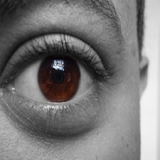- Forum
- General Discussion | Introductions | Off Topic Forum
- Photography General Discussion
- What was the resolution of film?
What was the resolution of film?
-
 Topic Author
Topic Author
- GWS
- Lone Wolf
-
- Nikon D700
- Followers: 67
- Posts: 118
-
Points:
1745
Post #416022
I think it depends more on how sharp a lens you use, getting a proper exposure, knowing how to compose images well etc. if you want to get the best quality photos. I've gotten photos accepted into juried exhibits, ones that I've shot on film, or digitally, or using alternate processes so for me it hasn't mattered which medium I've used.
Sharon
Post #416044
Also it depends on the film as they are all different. The lower the ISO the higher the resolution. This is due to the fact that the grain can be very fine since it is for a high light environment. When you go to higher ISO films over say 400 the grain gets more coarse, or larger to accept less light.
-

- effron
- Newbie
- Followers: 1623
-
Points:
129640
-

- MYoung
- Master of the Lens
-
- Sony a7s II, Nikon D750
- Followers: 486
- Posts: 1628
-
Points:
12125
-

- garyrhook
- Oh Wise One
-
- Nikon D850, Nikon D750, Panasonic G7K
- Followers: 912
- Posts: 11103
-
Points:
67681
Post #416403
garyrhook wrote: It would be specified in DPI, not MP. And as stated above, it depends upon the film. There's no single answer.
Exactly!
Then there is also a matter of resolution in printing. In order to print photos from it of any great size the film needs to be of a larger format. But it is still under the grain constraint of resolution as well.
If you want a quick and maybe not accurate example, then look at it like this, if 400 ISO film is 300 DPI, then 25 ISO is 1000 DPI. That is the difference in the grain sizes.
-

- Tim Entin
- Has the Hang of it
-
- Nikon D700
- Followers: 9
- Posts: 52
-
Points:
0
-

- Pettigrew
- Photography Hooked
-
- Canon EOS 7D SLR
- Followers: 199
- Posts: 987
-
Points:
8285
Post #416498
Canon EOS 7D SLR | XT W/18-55 Kit Lens | Canon 50mm 1.8 | Tamron 17-50mm 2.8 | Canon 28-105mm | Canon 75-300mm | Canon 100mm 2.8 Macro | Canon 100-400
Post #416548
Pettigrew wrote: Wiki offers a pretty good write up on this topic as well - en.wikipedia.org/wiki/Digital_versus_film_photography
But Wiki, or the authors are incorrectly equating the film sizes in the resolution with MPs, over DPI. They are giving the 4x5, and larger films some outrageous numbers that are not even close. This is because with the film it is not the size that decides the resolution, unlike digital, but the fineness of the grain, or DPI. In which case digital sensors out resolve film. The only reason that you could print larger photos with Medium Format was the size of the negative, the resolution of the final image was again affected by the grain of the film itself. A digital sensor is always at a constant, unless you use a cropped lens on a Full Frame camera that allows it, so the more MPs the larger the data file, and the better the resolution for printing.
-

- hghlndr6
- Master of the Lens
- Nikon: P510, D600, D7100
- Followers: 1222
- Posts: 1650
-
Points:
28119
Post #416586
Joves wrote:
Pettigrew wrote: Wiki offers a pretty good write up on this topic as well - en.wikipedia.org/wiki/Digital_versus_film_photography
But Wiki, or the authors are incorrectly equating the film sizes in the resolution with MPs, over DPI. They are giving the 4x5, and larger films some outrageous numbers that are not even close. This is because with the film it is not the size that decides the resolution, unlike digital, but the fineness of the grain, or DPI. In which case digital sensors out resolve film. The only reason that you could print larger photos with Medium Format was the size of the negative, the resolution of the final image was again affected by the grain of the film itself. A digital sensor is always at a constant, unless you use a cropped lens on a Full Frame camera that allows it, so the more MPs the larger the data file, and the better the resolution for printing.
It's apples and oranges. A digital file has a specific number of pixels, resulting from a sensor with a specific number of photo sites, and therefore has a resolution that can be expressed in ppi. Film has a continuous emulsion. With lower sensitivity film, such as 25 or 32, that emulsion would have a very fine grain. At higher sensitivity, such as 400, the emulsion would have more grain. Push that 400 film to 1600 and you get even bigger grain. None of that equates to resolution. As Dennis said, the size of the negative (or transparency) does come into play. An enlargement to a given size from a 35mm is going to show more grain than the same size printed from a 2-1/4 square, and a lot more than the same size printed from a 4x5.
- Forum
- General Discussion | Introductions | Off Topic Forum
- Photography General Discussion
- What was the resolution of film?
Latest Reviews
The Olympus Pen E-P7 is an affordable micro four thirds mirrorless camera with 4K video capabilities, a 20.3MP sensor, and 121 focus points, making it a solid entry-level camera for beginners.
The Panasonic G9 II is a 25.2-megapixel micro four thirds camera with numerous features that make it punch out of its weight class, like 779 AF points, 5.8K video, and weather sealing.
The Fujifilm XT5 is a 40MP mirrorless camera capable of 6.2K video at 30p. With those specs, it’s an ideal choice for photographers needing a camera to pull double duty for imaging and video.
The Canon EOS R100 is an entry-level mirrorless camera introduced in 2023. But just because it’s an entry-level camera doesn’t mean it’s a bare-bones camera. Find out why in this review!
Forum Top Posters
-
1CharleyL 6 posts
-
2Scotty 4 posts
-
3Roman Omell 4 posts
-
4Razky 4 posts
-
5Jim Photo 3 posts
-
6Colorado Mike 3 posts
-
7J Photo Man 3 posts
-
8Pat White 3 posts
-
9ShutterPal 3 posts
-
10Ruby Grace 3 posts
Latest Articles
In this guide to the bokeh effect, you’ll learn what bokeh is and the factors involved in creating it. You’ll also explore some beautiful example images to spark your creativity with bokeh!
Upgrade your kit in 2024 with the best intermediate camera on the market! The question is, what camera fits the bill? We’ve got three top options for you to choose from in this buyer’s guide.
The best photography jobs right now are a mix of tried-and-true gigs like wedding photography and new jobs highlighting AI’s capabilities, travel, and videography.
The Olympus Pen E-P7 is an affordable micro four thirds mirrorless camera with 4K video capabilities, a 20.3MP sensor, and 121 focus points, making it a solid entry-level camera for beginners.
Starting a photography business is one thing; sustaining your business over a long period of time is another. Use the tips in this professional photography guide to build something with longevity!
The Panasonic G9 II is a 25.2-megapixel micro four thirds camera with numerous features that make it punch out of its weight class, like 779 AF points, 5.8K video, and weather sealing.
Cinematic photography is an interesting genre that combines photographic and videographic skills along with effective storytelling techniques. The result? Highly impactful images!
Newborn photography requires skill, the right gear, and a lot of patience. This beginner’s guide discusses critical topics that will help you be more prepared for before, during, and after the shoot.














